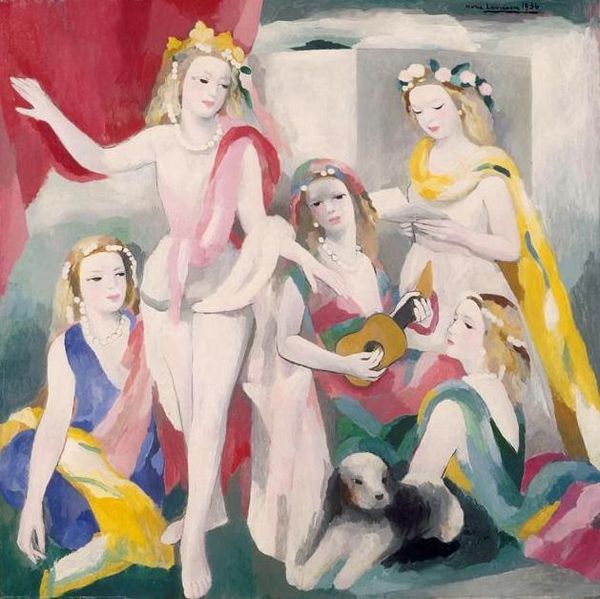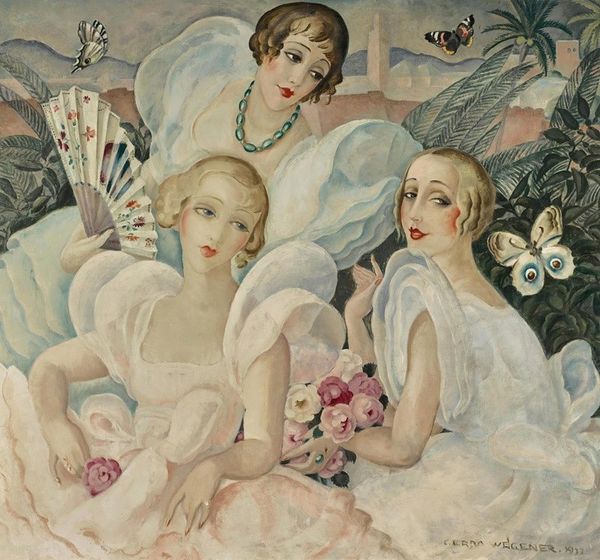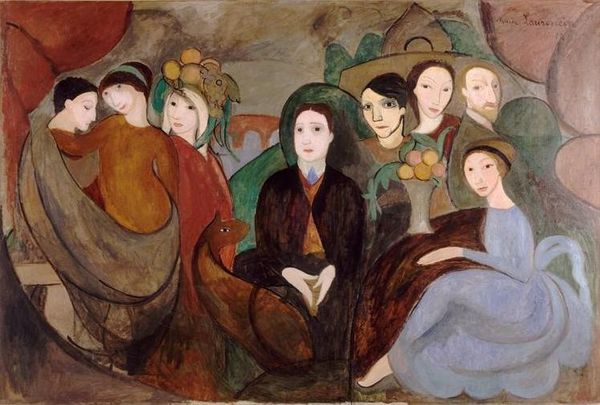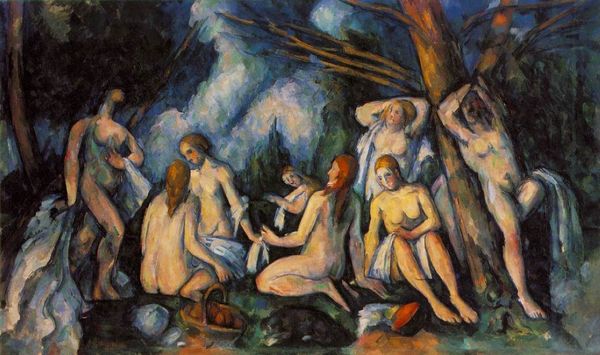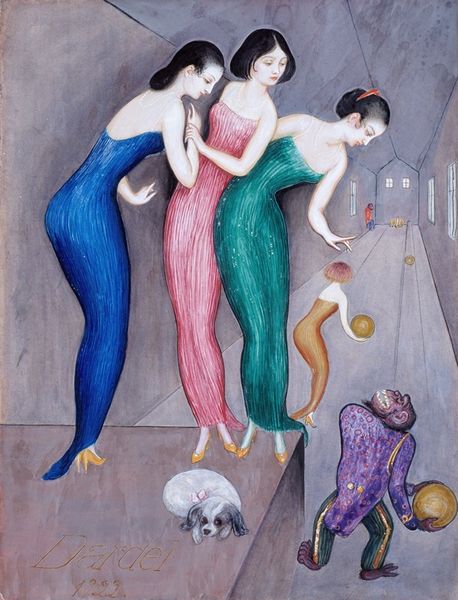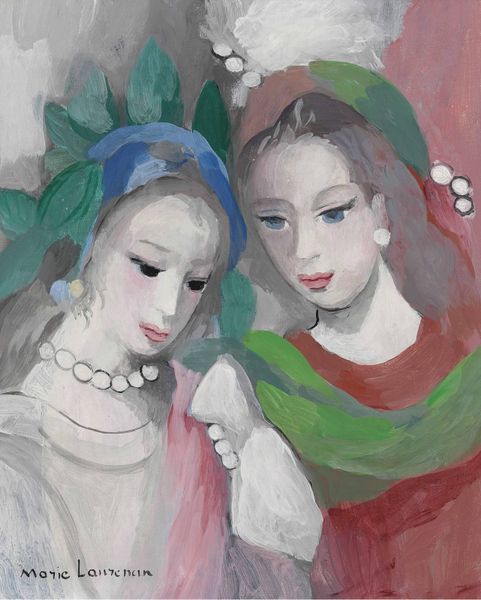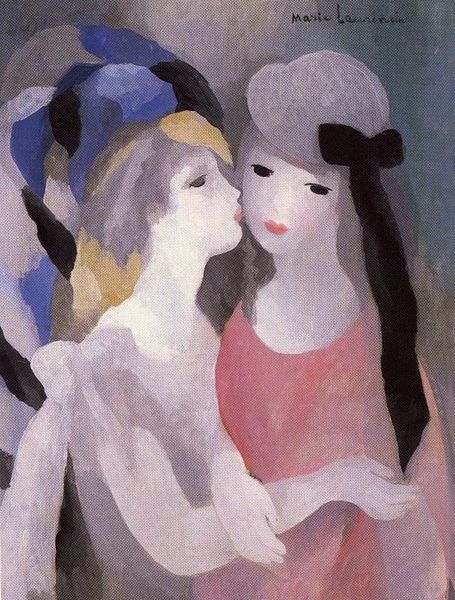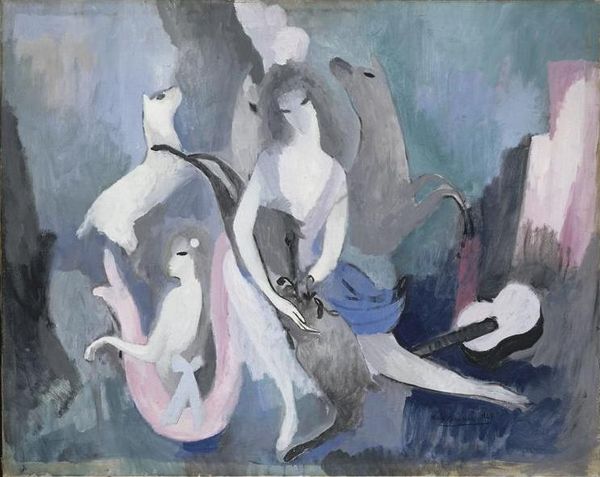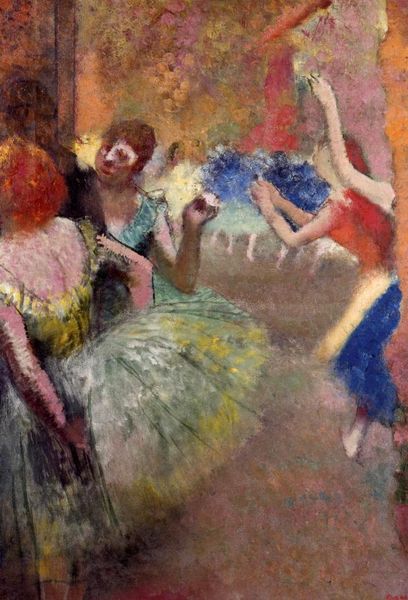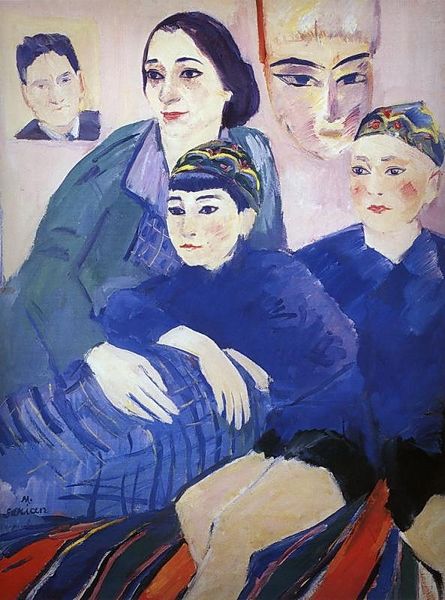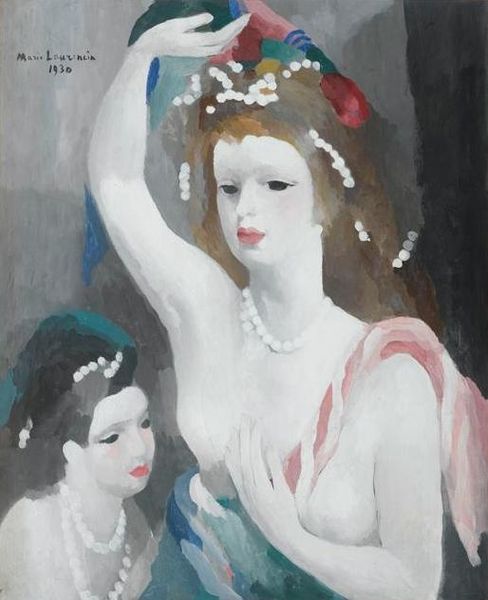
Copyright: Marie Laurencin,Fair Use
Curator: Before us, we have Marie Laurencin's "Ile-de-France," painted in 1940. What strikes you about this oil painting? Editor: A pastel dreamscape! It has this weightless quality, like a memory half-formed. The colours seem almost muted, as if washed by time itself, a group portrait veiled by distance. What did the application of oil on canvas offer Laurencin? Curator: Indeed. The softness you observe is quintessential Laurencin. Note how the flowing robes recall classical drapery, giving these figures a timeless, allegorical quality. Also observe the stylized figures. We see echoes of the Three Graces, attendants to Venus in the ancient allegories that artists so lovingly reference and update in paint, plaster, and photography. They are almost mythical figures emerging from the Parisian fog. What did life as a painter look like in France during wartime for Laurencin, then? Editor: Exactly. This wasn’t any standard, pre-mixed paint. These oil paints were painstakingly crafted, each pigment ground and mixed. Laurencin used her skills and artistic vision while using techniques in wartime France to convey and grapple with something very intimate in a moment where so much was at stake and under duress. The canvas itself speaks. Is it reused, perhaps carrying faint traces of earlier works? Curator: That's quite plausible, considering the circumstances. The figures feel both ethereal and melancholic. Given that it was created in 1940 during World War II, might there be an elegiac symbolism at work here, a longing for a lost era of innocence and freedom? Editor: That’s compelling. I am especially drawn to the hands – barely there. They hold nothing; their role seems ornamental, aesthetic. Even so, I keep circling back to materials, not only because resources were so impacted by war, but also in their impact upon form. What does the application, the layering reveal? The colours become translucent, yet grounded by an understanding of the historical period. Curator: These materials become almost like emotional repositories and time capsules then. Marie Laurencin was drawing not just with colours, but with memory. Editor: Agreed. And with necessity. The "Ile-de-France" shows us how materials and production tell resonant stories. Curator: Well, our analysis highlights that while Laurencin's painting evokes this airiness with allegorical figures, we have shown how even the composition gives us symbolic details of this historical period. Editor: It definitely adds depth. Thanks for enriching this dialogue by highlighting how meaning is made at a deeper level by not only cultural context, but through a focus on material, and skill.
Comments
No comments
Be the first to comment and join the conversation on the ultimate creative platform.
